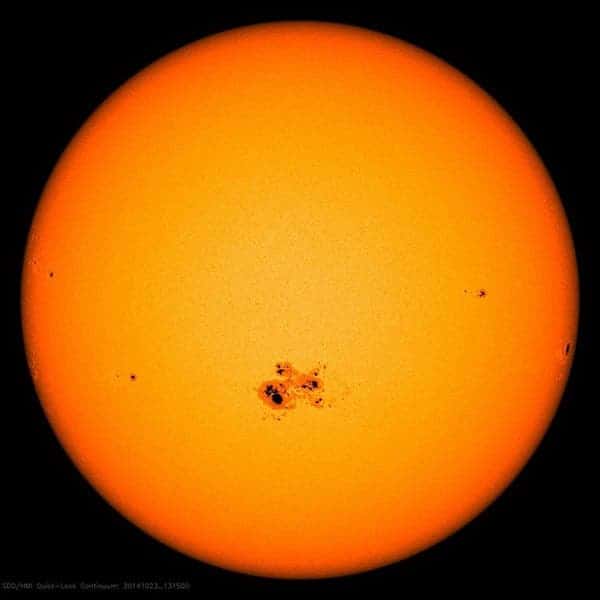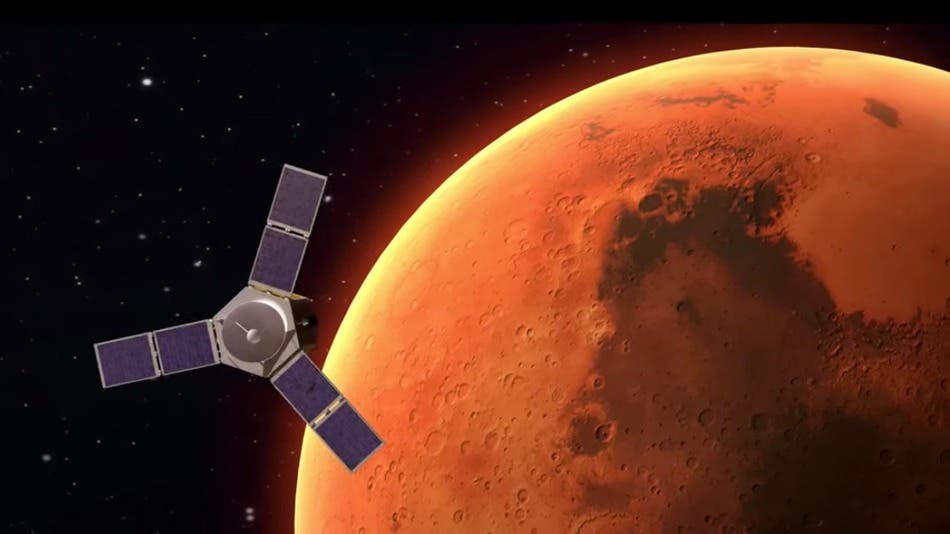As humanity continues to explore planets beyond the solar system — exoplanets — investigations into conditions on these worlds become increasingly complex. This includes the question of whether these exoplanets can support life.
New research has identified which stars would be most likely to host planets with the necessary conditions for habitability, based upon that star’s stellar activity and crucially the rate at which such activity strips away a planet’s atmosphere.
“We wanted to figure out how planets lose their atmospheres from extreme ultraviolet radiation and estimate their impact on their potential to host life,” Dimitra Atri, a researcher from the Space Science at NYU Abu Dhabi (NYUAD), tells ZME Science. “We focused on a channel of escape called hydrodynamic escape where stellar radiation heats up the planet’s atmosphere and a part of it escapes into space.”
![An artist's conception of HD 209458 b, an exoplanet whose atmosphere is being torn off at more than 35,000 km/hour by the radiation of its close-by parent star. This hot Jupiter was the first alien world discovered via the transit method, and the first planet to have its atmosphere studied. [NASA/European Space Agency/Alfred Vidal-Madjar (Institut d'Astrophysique de Paris, CNRS)]](https://cdn.zmescience.com/wp-content/uploads/2020/11/247271_web-1.jpg)
Atri is the author of a paper published in the journal Monthly Notices of Royal Astronomical Society: Letters, which analyzes flare emissions using data collected by NASA’s Transiting Exoplanet Survey Satellite (TESS) observatory ultimately helping to determine where else in the Universe life is most likely to prosper.
Harbouring Life: A Question of Water Retention
Planet habitability is closely associated with that world’s ability to hold liquid water. That means that factors which can boil away that water or cause it to be lost to space reduce that habitability. The habitable zone of a star’s environment is defined as the range at which a planet can orbit and still possess liquid water. This means not too hot or too cold — criteria that led to the alternative name for such regions, the Goldilocks zone.
Yet, distance and a star’s luminosity are not the only factors which can affect a planet’s ability to hold liquid water. Space weather — including solar flares — is another determining element, one that as of yet is not well understood. “Flares erode planetary atmospheres,” Atri says. “A substantial atmosphere is needed to sustain liquid water on a planet’s surface. Flares reduce those chances and make planets less habitable.”

What Atri, alongside coauthor and graduate student Shane Carberry Mogan, discovered was that whilst luminosity from a star was still the primary driving factor in atmosphere stripping, flares were a more important factor for some stars than others. In particular, they discovered that flares from M0-M4 stars — cool, red stars like Betelgeuse — were more likely to strip an orbiting planet’s atmosphere.
The duo determined that more frequent, lower energy flares in the extreme ultraviolet region (XUV) of the electromagnetic spectrum were more effective at stripping a planet’s atmosphere and thus reducing its habitability than less frequent, higher energy outbursts. XUV radiation strikes a planet’s atmosphere heating it. This causes hydrodynamic escape, pushing out light atoms first, which through collision and other drag effects also pull out heavier molecules.
“We find that for most stars, luminosity-induced escape is the main loss mechanism, with a minor contribution from flares,” Atri explains. “However, flares dominate the loss mechanism of around 20 per cent of M4–M10 stars.
“M0–M4 stars are most likely to completely erode both their proto- and secondary atmospheres, whilst M4–M10 stars are least likely to erode secondary atmospheres.”
The study also highlights the fact that better modelling of the factors that affect an exoplanet’s atmosphere is needed. Determining the systems and planets most likely to harbour life will play an important factor in selecting targets for the upcoming James Webb Space Telescope — set to launch on October 31st 2021 — and the ESO’s Extremely Large Telescope (ELT) currently under construction in the Acatma desert, Chile.
“The next research step would be to expand our data set to analyze stellar flares from a larger variety of stars to see the long-term effects of stellar activity, and to identify more potentially habitable exoplanets,” adds Atri.
The researcher also points out that the continued investigation of how planets lose their atmosphere could also focus on a target closer to home, our nearest neighbour, Mars. “Since it is extremely difficult to observe the escape process in exoplanets, we are planning to study this phenomenon in great detail on Mars with the UAE’s Hope mission,” the researcher says, explaining how observations from Mars missions can be used to better understand atmospheric escape and how this knowledge can be applied to exoplanets.“We will then apply our understanding of atmospheric escape to exoplanets and estimate the impact of extreme UV radiation on planetary habitability.”

(Mohammed bin Rashid Space Centre)
Further to the question of habitability, the study begins to address the wider question of the dynamics of stars and their planetary systems and the evolution of such arrangements. “Given the close proximity of exoplanets to host stars, it is vital to understand how space weather events tied to those stars can affect the habitability of the exoplanet,” Atri concludes. “Stars and planets are very tightly coupled in a number of ways and an improved understanding of this coupling are absolutely necessary to find habitable planets in our Galaxy and beyond.”
Atri. D., Carberry Morgan. S. R., [2020], ‘Stellar flares versus luminosity: XUV-induced atmospheric escape and planetary habitability,’ Monthly Notices of Royal Astronomical Society: Letters.


